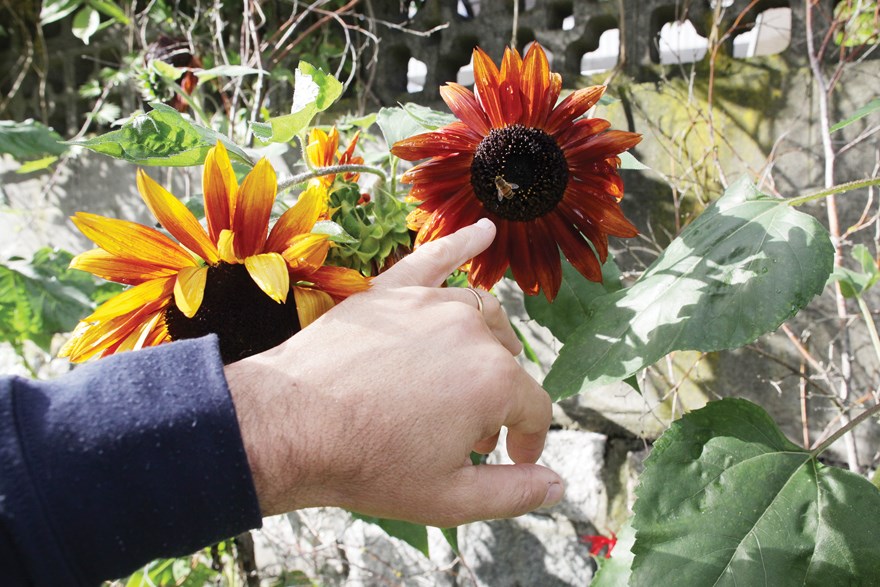I recently visited a butterflyway in the Deep Cove area where the butterfly rangers gathered and hosted an open house to show off the block-long garden they had transformed from an overgrown blackberry patch into butterfly habitat.
The Butterflyway Project is based on the David Suzuki Foundation’s Homegrown National Park Project, with the goal of establishing pollinator corridors throughout the land where butterflies and bees can find food and habitat.
The rangers are trained how to create these habitats, and then establish a butterflyway by planting at least a dozen pollinator patches in their neighbourhood.
I spend a lot of time in the gardens that I design. The beautiful combinations of flowers, trees and shrubs combining to serve as habitat are nothing new to me – but what really impressed me at the recent butterflyway was the community involvement around such a great cause.
It seemed like the whole neighbourhood was there and actively involved and interested in transforming the area for the better. Not only have they transformed their alleyway, they are also creating beautiful habitat gardens on the boulevard areas along the street in formerly neglected areas.
Wondering how to establish a butterfly-friendly habitat? Planting native wildflowers, trees and shrubs offer habitat and food sources. Piles of fallen branches, plant stems (the hollow centres offer nesting spots) and rotting wood all combine to offer homes for various stages in the butterfly and bee lifecycle. (It’s also a good reason for chop and drop gardening practices.)
Leaving some bare patches of earth in some areas encourages burrowing bees to nest. Providing a shallow dish of fresh water with stones or marbles in the bottom so the butterflies and bees can land on them and drink is an attractive and inviting addition to the garden. A patch of mud somewhere in the garden makes it easy for mason bees to create dividers between their eggs, and to plug the holes of the nesting tubes. Oh, and just a reminder, now is the time to clean the mites off your mason bee cocoons if you have not already done so.
Some easy to grow native plants that butterflies like are bee balm (Monarda fistulosa), red columbine (Aquilegia Formosa), nodding onion (Allum cernuum), showy milkweed (Asclepias speciosa), black-eyed Susans (Rudbeckia hirta), Douglas aster (Symphyriotchum subspoicatum), hardhack (Spiraea douglasii), Joe Pye weed (Eupatorium purpureum), Anise hyssop (Agastache foeniculum) and one of my favourite food plants, stinging nettle (Urtica dioica), is a host plant for Red Admiral, Satyr Anglewing, Painted Lady, and Milbert’s Tortoiseshell butterflies.
Nettle is also an excellent green vegetable in the early spring and again in the fall if it’s cut back after flowering in late summer. It’s also my absolute favourite smoothie green.
Now is the perfect time to plant the seeds of plants that will attract butterflies to your garden next spring, and a great project to unite your neighborhood and help pollinators!
For more information on the Butterflyway project, visit davidsuzuki.org/take-action/act-locally/butterflyway.
Heather Schamehorn is a certified residential landscape designer, educator, sustainability advocate and acupressure therapist. Contact via www.perennialpleasures.ca



